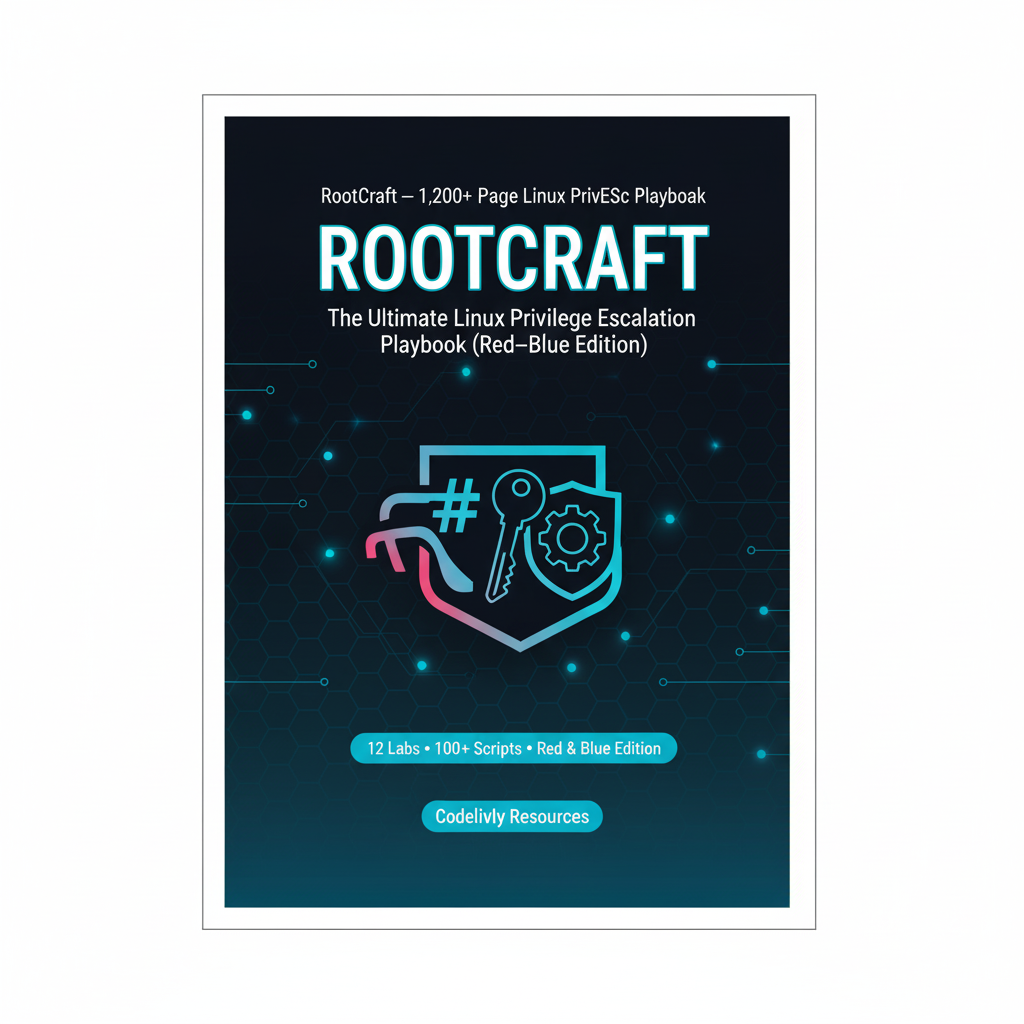Linux Playbook For Hackers – Advanced Edition
$ 19.99
The Linux Hacker’s Playbook – Advanced Edition is a hands-on continuation of Linux Playbook for Hackers, built for red team operators, pentesters, and advanced security practitioners who want to master real-world Linux attack techniques. Covering kernel internals, process manipulation, privilege escalation, persistence, rootkits, EDR/AV evasion, container and cloud exploitation, and offensive malware development, this book pairs deep technical explanation with step‑by‑step lab exercises. Practical modules on lab automation, network pivoting, IoT/embedded attacks, and post‑exploitation scripting make it an essential resource for anyone serious about advanced Linux offensive operations—delivered responsibly with defensive guidance and safe lab practices.
-
United States dollar ($) - USD
-
Euro (€) - EUR
-
Indian rupee (₹) - INR
Description
Mastering Linux Exploitation, Evasion, and Persistence Techniques for Red Team Operators and Pen Testers
Dive past the basics and into the real tradecraft used by professional red teams, offensive security engineers, and advanced penetration testers. The Linux Hacker’s Playbook — Advanced Edition is a hands-on, lab-driven manual that teaches you how attackers operate at the OS, network, container, and cloud layers — and, crucially, how defenders detect and stop them. This is advanced material: kernel internals, stealthy persistence, exploitation at scale, evasive malware concepts, and automated red-team workflows — presented responsibly with a lab-first mindset.
What you’ll get
- Deep OS mastery — Understand Linux kernel internals, syscalls, namespaces, cgroups and eBPF so you can reason about attacks and defenses at the lowest level.
- Exploit & escalation techniques — Real-world approaches for privilege escalation, kernel exploits, container escapes, SUID misuse, and attacking middleware — taught as labs and case studies, not theory.
- Adversary lab engineering — Build repeatable red-team labs with Docker, QEMU, and cloud platforms; automate environments using Terraform and Ansible.
- Network offense & pivoting — Low-level networking, IDS/IPS evasion patterns, L2/L3 attacks, pivoting and lateral movement techniques for realistic engagements.
- Stealth & persistence — Rootkits, userland and fileless persistence, anti-forensics, log tampering, and persistence design patterns with defensive detection notes.
- Offensive malware concepts — Payload design using C/Python/Go, polymorphism, packers/cry pters, and methods for testing evasiveness in controlled labs.
- Automation & tooling — Build exploit scripts, post-exploitation automation, and offensive blue-team tools (priv-esc scanners, recon bots, network worms as lab projects).
- Cloud & IoT attack surfaces — Attacking hybrid cloud setups (AWS, GCP, Azure), cloud privilege escalation, and exploitation of embedded Linux / IoT devices.
- Web → Root chains — Practical sequences that escalate web vulnerabilities into full system compromise, chaining multiple techniques safely in labs.
Every module includes step-by-step labs, reproducible code snippets, safe test cases and defensive chapters so you learn both how attacks are done and how to detect & mitigate them.
Who this book is for
- Experienced red teamers and pentesters who want to level up to advanced Linux tradecraft.
- Security engineers who need to understand attacker techniques to build better defenses.
- Senior students and researchers focusing on offensive security, malware analysis, or cloud threat research.
Responsible use
This book is intended for ethical, legal, and educational use only. Labs should be run in isolated test environments you own or are authorized to use. Each offensive technique is paired with detection and mitigation guidance so readers understand defensive countermeasures as well.





Reviews
There are no reviews yet.